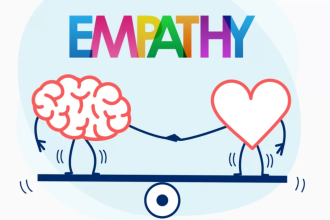Embroidery has always been the art of designing clothes. It gives your clothes a unique look and can help your brand stand out with customized branded products. Embroidery refers to making patterns and designs on fabrics using needles and threads. Embroidery services are widely popular because they allow people to bring their designs to life on clothing, hats, bags, and other fabrics. However, the question arises: how do embroidery services bring designs to life, and what is the process behind it? In this blog post, we will explore how embroidery services bring designs to life and what steps you should take to ensure your embroidery project succeeds.
Choosing the Right Colors
The first step to bringing your embroidery design to life is to choose the right colors. Embroidery services typically use thread in various colors, allowing you to create vibrant and eye-catching designs. Feel free to experiment with different color combinations to find the perfect match for your project. If you are unsure which colors to choose, work with your embroidery service provider to ensure you get the right look.
Choosing the Right Material
The next step is to select the right material for your project. Embroidery can be done on various materials, including cotton, polyester, and silk. Each fabric type has its benefits and limitations, so select the right material for your needs. If you are unsure which material to choose, ask your embroidery service provider for advice before browsing through different Embroidery Shops.
The Concept of Design
Design is the first step of the actual embroidery services process. You can choose a design from a digital application or create one that suits your needs. The embroidery service provider needs a digital copy of the design in the .dst file format. The .dst file contains the embroidery design information that the embroidery machine uses to stitch the design onto the fabric.
Tracing the Design
Once the embroidery service provider has a specific design file, tracing the design begins. A special software is used to trace the design and to identify the areas where the embroidery machine will stitch. During the tracing process, several adjustments are made to the design, such as scaling, orientation, or altering the thread colors.
Setting Up the Embroidery Machine
Setting up embroidery machines can be complex. The design information from the .dst file is uploaded into the embroidery machine computer, and the fabric on which the embroidery is to be done is placed on the embroidery on the hoop – a plastic or metal ring that holds the fabric to avoid movement during stitching. Once everything is set up, the embroidery machine begins stitching the design onto the fabric.
Embroidering the Design
The embroidery machine works through different patterns to stitch the design onto the fabric. Although the process may differ, depending on the embroidery machine, the designs are embroidered with refined accuracy and precision to ensure a high-quality product.
Finishing Touches
The embroidery service provider does some finishing touches to the embroidery product after the design is completed, such as trimming the excess threads and checking for any defects. Finally, there’s heat pressing – a technique that flattens loose stitches and gives your embroidery designs a smooth and polished finish.
Wrapping Up
Embroidery is a traditional art that has significantly evolved from manually stitching designs on fabrics to using software that makes the process more accurate and faster. Today, embroidery services are widely known for their quality and uniqueness, so people choose embroidery over other prints. It’s clear that embroidery services bring designs to life using specialized machines, refined software, and a team of professionals to achieve a high-quality product. If you want to stand out with unique clothing and product designs, embroidery services can give you the tools you need to achieve your goals.













